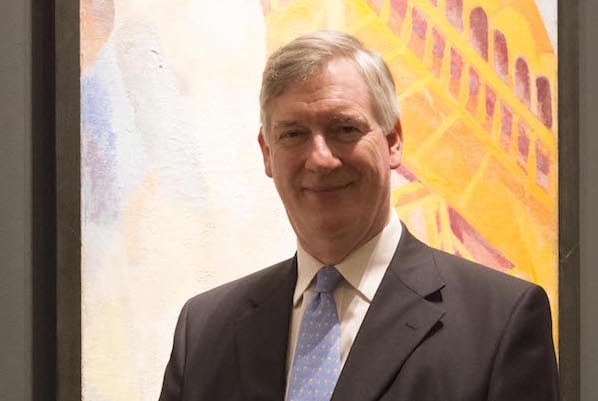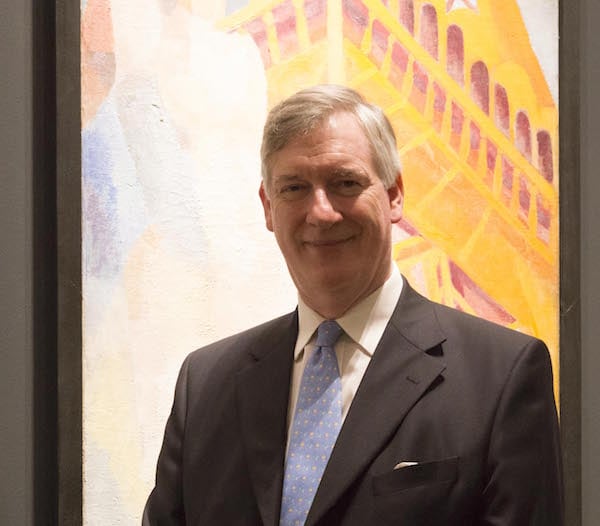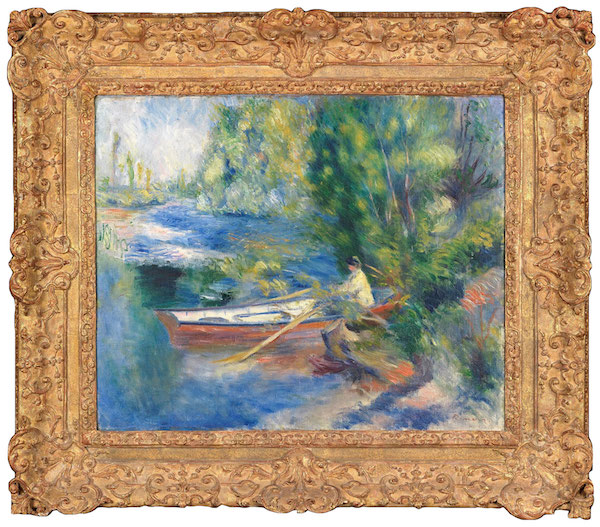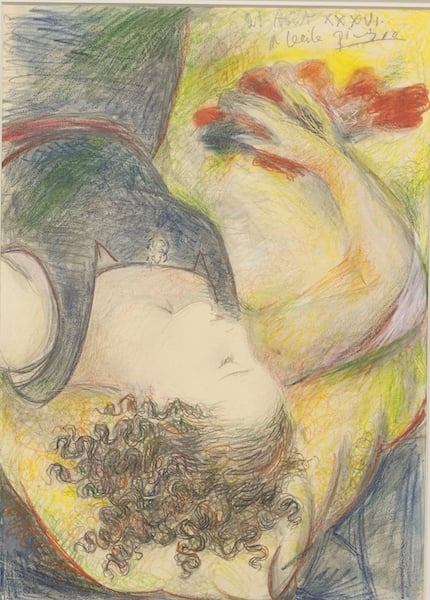Art Fairs
artnet Asks: Dickinson Director and TEFAF Picture Section Vice Chairman James Roundell
The art expert's guide to all things TEFAF.

Photo: © Dickinson.
The art expert's guide to all things TEFAF.

Lorena Muñoz-Alonso


James Roundell, standing in front of Robert Delaunay’s Eiffel Tower painting.
Photo: © Dickinson.
With barely two days left before the much-awaited 2016 edition of TEFAF kicks off in Maastricht, artnet News talked to James Roundell, director of the London-based gallery Dickinson and TEFAF’s picture section vice chairman and executive committee member.
This year marks the 29th anniversary of the fair, which will host a whopping 275 galleries from 20 countries showcasing the best in Old Master paintings, antique works, classical modern and contemporary art, photographs, jewelry, and even 20th century design.
Roundell unveiled some of the stunning highlights that Dickinson will be bringing to the fair and also, as a bonafide TEFAF veteran, shared some tips and recommendations to make the most of both the fair and the city of Maastricht, which, for a period of over 10 days, becomes the key meeting point for art lovers from all over the world.
You are bringing a series of masterpieces to TEFAF that include works by Pierre-Auguste Renoir, Henri Matisse, Pablo Picasso, and Robert Delaunay. What can you tell us about these works?
We have been privileged for a number of years now to be able to bring important pictures that have not been seen on the market and are considered highlights of the fair. For us, TEFAF is a fair for which we prepare rigorously and encourage owners to consign major works to us, since it has been a very good venue to sell important pictures.
We have a wonderful Renoir masterpiece from 1885, showing a fashionable lady in a boat on the Seine, painted in luxuriant and lush tones, displaying Renoir’s admiration for the French rococo style of Fragonard and Watteau, as he moves away from a purely Impressionist facture. The Matisse is a vibrant cut-out, revealing Matisse’s mastery of scissors, paper, and color. This piece was in the recent “Matisse Cut-Outs” exhibition at Tate Modern. It is astoundingly fresh.
The Picasso colored crayon drawing shows all the well known mastery of line that was Picasso’s hallmark, allied to a tenderness as he depicts the daughter of his friends Paul and Nusch Éluard. This is a rare work and is a real connoisseur’s drawing. The Delaunay may be the biggest picture at the fair, at 4.5 meters high. It is a remarkable depiction of the artist’s favorite motif, the Eiffel Tower, the symbol of modernity in Paris. It was shown in the Paris Exposition in 1925 that marked the coining of the style Art Deco.

Pierre-Auguste Renoir, Au Bord de l’Eau (1885).
Photo: © Dickinson.
What do you keep in mind when you choose the works you will display at your booth at TEFAF?
We want to show a range of works from the 14th century through to the end of the 20th century that reflect the full range of the gallery’s activities. We want to show works, where possible, of the first quality which are fresh to the market. We have a reputation for being able to source great pictures from private collections, as we’ve had continued success over a number of years with sales at Maastricht, and this encourages private owners to consign pictures to us for sale.
Dickinson is a TEFAF regular. What can you tell us about the relationship between the gallery and the fair?
It is the character of the art market in recent years that fairs have become increasingly important as the major drivers of sales for galleries. TEFAF sits at the forefront of the world’s fair scene. Dickinson has one of the prime positions in the fair, due to the quality of the works we bring to the fair. I am vice-chairman of the picture section and on the executive committee of the fair, charged with maintaining and improving the success of the fair. If the fair does well, the gallery does well!
What makes this fair so unique, and a leader in its field?
Many other fairs just cover a part of the spectrum of art. For instance, Art Basel is becoming increasingly a contemporary fair, Frieze Masters shows mainly pictures, the original Frieze shows the latest young artists and now very little classical contemporary. TEFAF aims to show the whole history of art and how artists have developed and fed off their predecessors. In the end it is about quality, if a collector wants to see the best of what’s on the gallery market, in whatever field, then TEFAF is the fair to visit.

Pablo Picasso, Portrait de Mademoiselle (Cécile Eduard) (1936).
Photo: © Dickinson.
It is also a very large fair. What would be your special tips and recommendations for newcomers or visitors with not a lot of time?
My first tip would be to make more time. Maastricht has a very pretty old town, well worth a visit, with great restaurants and some good hotels. Stay at least a night, then spend more time in the fair and spoil yourself by seeing great art in some fields that you may not have considered looking at. TEFAF allows one to open one’s eyes as a collector.
Always decide which section you wish to see first and work methodically with the floor plan, and if you have a relationship with a particular dealer, go there first and he will tell you which other stands you should visit. TEFAF is a fair where the dealers work together rather than compete.
What highlights of the history of Dickinson can you tell us about?
Dickson was founded by Simon Dickinson in 1993, a former Head of Christie’s Old Master Department, and David Ker, a private dealer. In 1995 I, a previous head of modern pictures at Christie’s, joined to start the modern wing of the company. We have a sister gallery in New York and representatives in Paris and Berlin, as well as close relationships with other galleries around the globe. We have been privileged over the years to sell some of the most important pictures to be sold in the art market.
I’ve been told that, while working at Christie’s, you presided over the famous sale of Vincent van Gogh’s Sunflowers in 1987. What do you remember most about that legendary moment?
That was the moment that really changed the values of art and inaugurated the modern art market as we know it. Overnight, the record price for a work of art was tripled and the general levels for the prices of modern art were altered forever. I was lucky enough to be asked to bid on behalf of the Japanese buyers, who were honored to be able to take back to Japan a van Gogh Sunflowers picture for public display.

Vincent van Gogh, Sunflowers.
Photo: Wikimedia Commons.
How would you say that the activity and habits of buying art have changed in the past centuries?
All that is certain is that fashion and taste change, as will the relative values of art. Perhaps one of the biggest changes is the way people buy art. In general, they do not go and walk around looking at galleries, unless there is an event or opening. Their life is too busy. An art fair gives them the opportunity to see a whole range of art in one place and is thus an ideal place to view art. Unlike the auctions, where often the collector has to make a shotgun decision for good or for bad, buying from a dealer at an art fair is a civilized transaction with mutual trust and consideration. It can be the most enjoyable way to collect art.
The 29th edition of art fair TEFAF will take place from March 11-20, 2016, in Maastricht, the Netherlands.